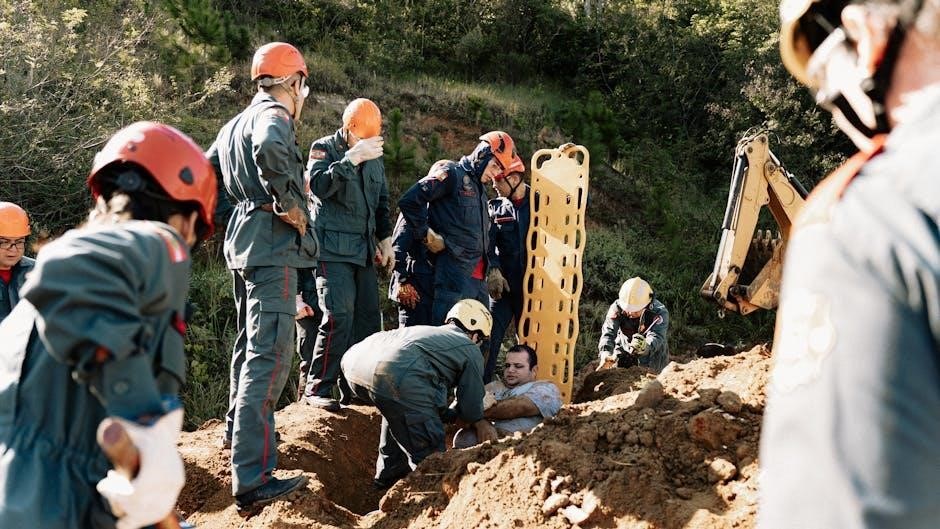The EPA 608 Certification is a critical credential for technicians working with refrigerants in the heating, ventilation, air conditioning, and refrigeration (HVAC-R) industry. Established by the U.S. Environmental Protection Agency (EPA), this certification ensures that technicians comply with federal regulations aimed at protecting the ozone layer and reducing greenhouse gas emissions. It is mandated under Section 608 of the Clean Air Act, which outlines strict guidelines for handling refrigerants to minimize environmental harm.
Obtaining the EPA 608 Certification involves passing a rigorous exam that tests knowledge of refrigerant handling, safety protocols, and environmental best practices. The certification is divided into four types based on the equipment and refrigerants a technician works with: Type I (small appliances), Type II (high-pressure systems), Type III (low-pressure systems), and Type IV (all refrigerants). Each type requires specific expertise, and technicians must demonstrate proficiency in their area of specialization.

Preparation for the EPA 608 exam often includes studying official materials and taking practice tests, such as those available in PDF format. These resources provide simulated exam questions and scenarios, helping candidates familiarize themselves with the test format and identify areas for improvement. By earning this certification, technicians not only meet legal requirements but also uphold industry standards for responsible refrigerant management.
1.1 What is EPA 608 Certification?
The EPA 608 Certification is a mandatory credential for technicians who handle refrigerants in HVAC-R (heating, ventilation, air conditioning, and refrigeration) systems. Established under Section 608 of the Clean Air Act, this certification ensures that technicians comply with federal regulations aimed at protecting the ozone layer and reducing emissions of ozone-depleting substances (ODS) and greenhouse gases. The certification is administered by the U.S. Environmental Protection Agency (EPA) and is a critical requirement for anyone working with refrigerants in the United States.
The EPA 608 Certification is divided into four distinct types, each corresponding to the specific tasks and equipment a technician may operate. These types are:
- Type I: For servicing small appliances, such as refrigerators, freezers, and other devices that contain less than 50 pounds of refrigerant.
- Type II: For servicing high-pressure refrigeration systems, including equipment like air conditioning units and heat pumps.
- Type III: For servicing low-pressure refrigeration systems, such as chillers and other equipment that operates below atmospheric pressure.
- Type IV: For servicing systems that use both high- and low-pressure refrigerants, requiring universal certification.
Each certification type requires technicians to demonstrate their knowledge of proper refrigerant handling, safety procedures, and environmental regulations. The certification process involves passing a written exam that covers topics such as refrigerant safety, leakage prevention, and proper disposal methods. Technicians must also understand how to use recovery equipment to reclaim refrigerants and prevent their release into the atmosphere.
The EPA 608 Certification is not just a legal requirement but also a demonstration of a technician’s commitment to environmental stewardship. By ensuring that refrigerants are handled responsibly, certified technicians play a crucial role in reducing the environmental impact of HVAC-R systems. The certification is valid for life, but technicians must adhere to ongoing best practices and stay updated on any changes to EPA regulations.

Preparation for the EPA 608 exam typically involves studying the EPA’s guidelines and practice materials, such as the EPA 608 Practice Test PDF. These resources provide sample questions and scenarios that mirror the actual exam, helping candidates assess their knowledge and identify areas for improvement. By obtaining this certification, technicians gain the expertise and credentials needed to work confidently and legally in the HVAC-R industry.
1.2 Why is EPA 608 Certification Important?

The EPA 608 Certification is a cornerstone of environmental and industry standards in the HVAC-R (heating, ventilation, air conditioning, and refrigeration) sector. Its importance extends beyond legal compliance, as it plays a pivotal role in protecting the environment, ensuring safety, and maintaining the integrity of refrigeration systems; Below are the key reasons why the EPA 608 Certification is essential for technicians, employers, and the environment alike.
1.2.1 Legal Compliance and Regulatory Requirements
The EPA 608 Certification is mandated under Section 608 of the Clean Air Act, which regulates the handling of ozone-depleting substances (ODS) and greenhouse gases. Technicians who work with refrigerants in the United States are legally required to obtain this certification. Violations of these regulations can result in significant fines and penalties for both individuals and employers. By obtaining the EPA 608 Certification, technicians ensure that they are operating in compliance with federal law, avoiding potential legal repercussions.
1.2.2 Environmental Protection
The primary goal of the EPA 608 Certification is to minimize the release of refrigerants into the atmosphere, which contribute to ozone depletion and climate change. Refrigerants, such as chlorofluorocarbons (CFCs) and hydrochlorofluorocarbons (HCFCs), were widely used in HVAC-R systems but were found to damage the ozone layer. The Montreal Protocol and subsequent amendments led to the phase-out of these substances, and the EPA 608 Certification ensures that technicians are trained to handle refrigerants responsibly.
Technicians with EPA 608 Certification are trained to follow best practices for refrigerant recovery, recycling, and reuse, reducing the likelihood of illegal venting or improper disposal. This certification promotes sustainable practices and helps protect the environment for future generations.
1.2.3 Industry Standards and Professional Credibility

The HVAC-R industry is highly competitive, and the EPA 608 Certification serves as a badge of professionalism and competence. Employers often require this certification as a condition of employment, as it demonstrates that a technician has the necessary knowledge and skills to handle refrigerants safely and efficiently. By obtaining the certification, technicians enhance their credibility and increase their chances of securing better job opportunities.

1.2.4 Enhanced Safety and Efficiency
The EPA 608 Certification also focuses on safety protocols and best practices for handling refrigerants. Refrigerants are hazardous substances that can pose serious health risks if mishandled. Technicians who undergo training for the EPA 608 Certification learn how to handle refrigerants safely, reducing the risk of accidents and injuries. Additionally, proper training ensures that technicians can perform their jobs more efficiently, leading to better system performance and customer satisfaction.

1.2.5 Role of Practice Tests in Preparation
Preparing for the EPA 608 Certification exam requires thorough study and practice. One of the most effective tools for exam preparation is the EPA 608 Practice Test PDF. These practice tests provide a simulated exam environment, allowing candidates to assess their knowledge and identify areas that need improvement. By using these resources, technicians can ensure that they are well-prepared for the actual exam, increasing their chances of passing on the first attempt.
Practice tests also help technicians familiarize themselves with the exam format and content, reducing anxiety and improving confidence. This ensures that they are not only legally compliant but also fully prepared to handle the challenges of refrigerant management in the field.
1.2.6 Encouraging Continuous Learning

The EPA 608 Certification is valid for life, but it encourages technicians to stay updated on the latest industry practices and regulatory changes. The HVAC-R industry is constantly evolving, with new technologies and refrigerants being introduced to reduce environmental impact. By staying informed and adhering to the principles outlined in the EPA 608 Certification, technicians can continue to contribute to the development of sustainable and efficient HVAC-R systems.
1.2.7 Supporting Employer Responsibilities
Employers in the HVAC-R industry also benefit from hiring EPA 608-certified technicians. Compliance with federal regulations is essential for avoiding fines and maintaining a positive reputation. Employers can demonstrate their commitment to environmental responsibility by ensuring that all technicians are certified. This not only protects the company but also enhances its credibility in the eyes of customers and stakeholders.

Additionally, certified technicians are better equipped to handle refrigerant-related tasks, reducing the risk of accidents and ensuring that systems are operated efficiently. This leads to cost savings for employers and improved customer satisfaction.
1.2.8 Global Impact and Future Outlook

The importance of the EPA 608 Certification extends beyond the United States, as similar regulations are being implemented globally to address climate change and ozone depletion. Technicians who obtain this certification are part of a global effort to reduce the environmental impact of HVAC-R systems. As international agreements and regulations continue to evolve, the EPA 608 Certification will remain a critical credential for technicians working with refrigerants.
